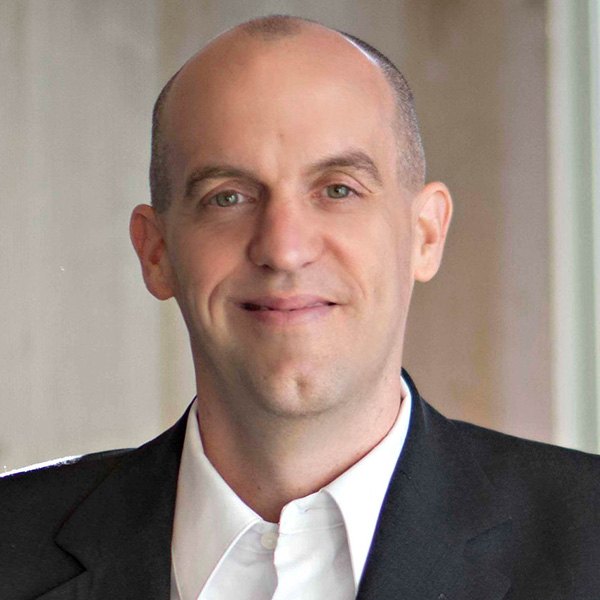CITYPARK is more than just a stadium for Major League Soccer’s St. Louis CITY SC. It’s a source of civic pride and a beacon for downtown St. Louis.
The 22,500-seat stadium anchors a thriving new downtown district with a team headquarters, training facility and practice fields. The venue represents a new model for MLS, moving away from the standard inward-facing venues. It’s a new public amenity that invites all of St. Louis to share in the soccer experience.
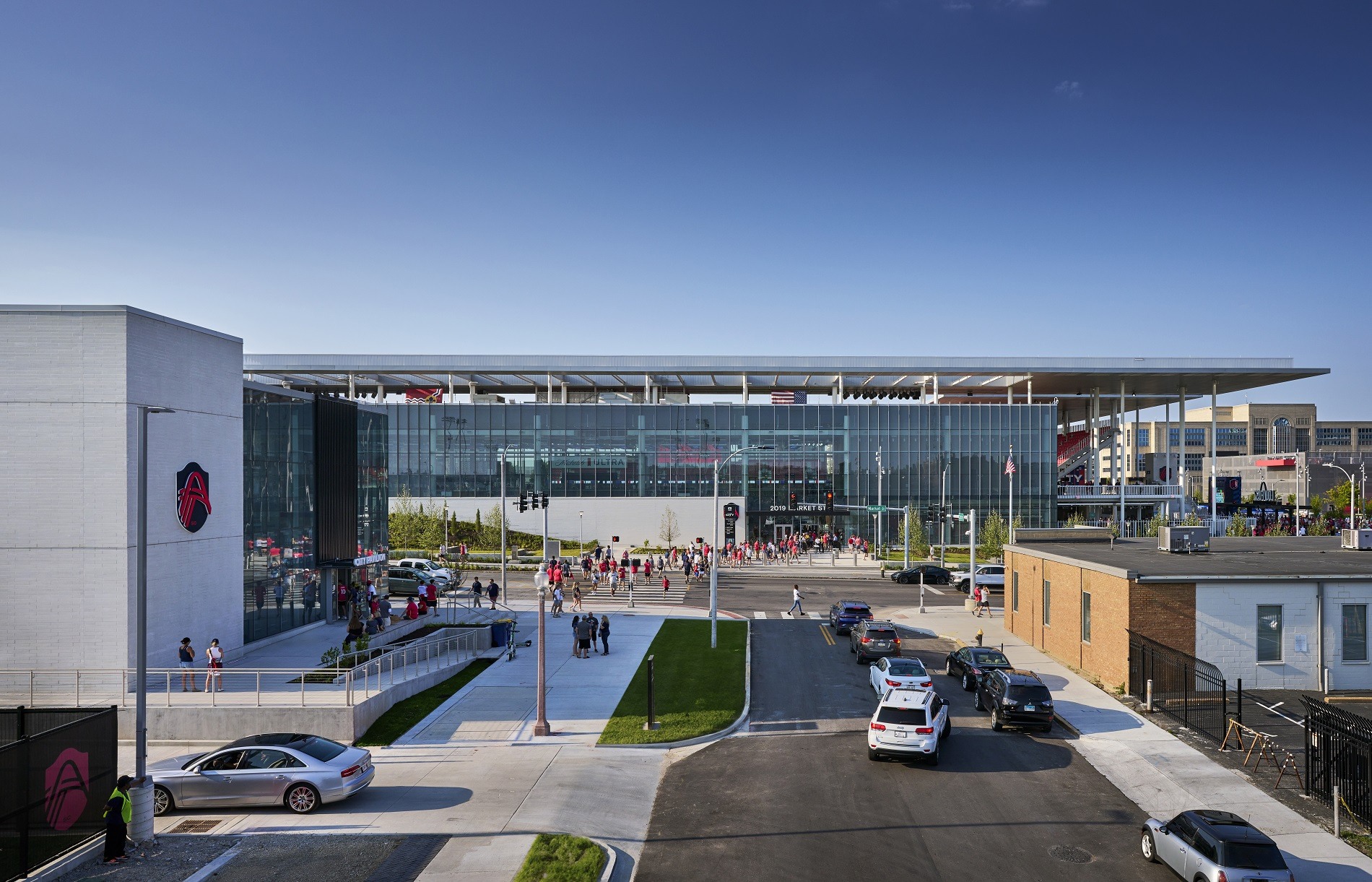
Largest Urban Pro Sports Campus in the U.S.
CITYPARK is the largest urban professional sports campus in the United States. CITY SC is the only MLS club with all team facilities consolidated in one central downtown location. This strategic decision has two main benefits:
- It creates a pedestrian-centric design that encourages St. Louisans to celebrate and participate in the city’s storied soccer culture.
- It supports the team’s ambition to create North America’s premier soccer academy and development system.
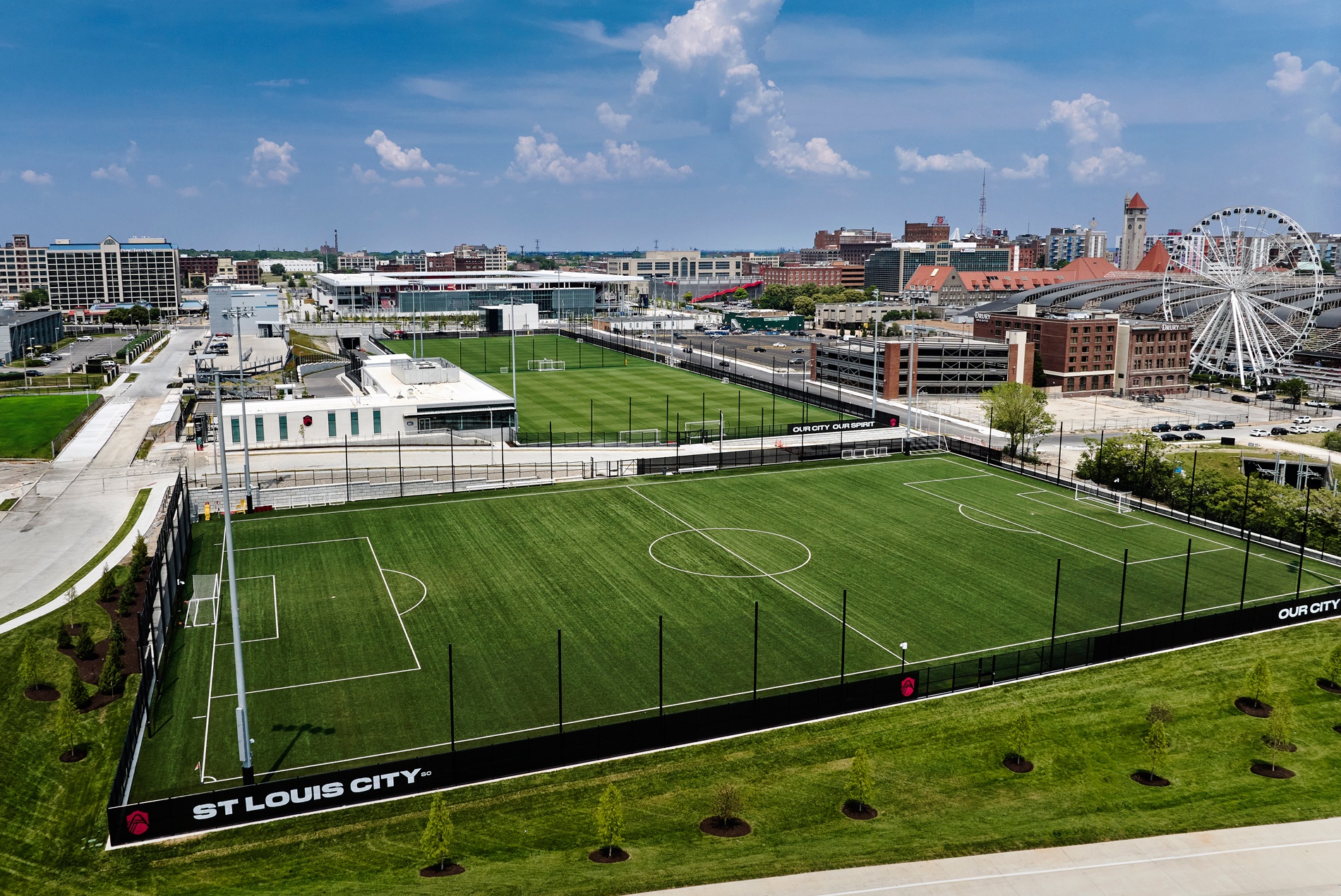
A Catalyst for Downtown Revitalization
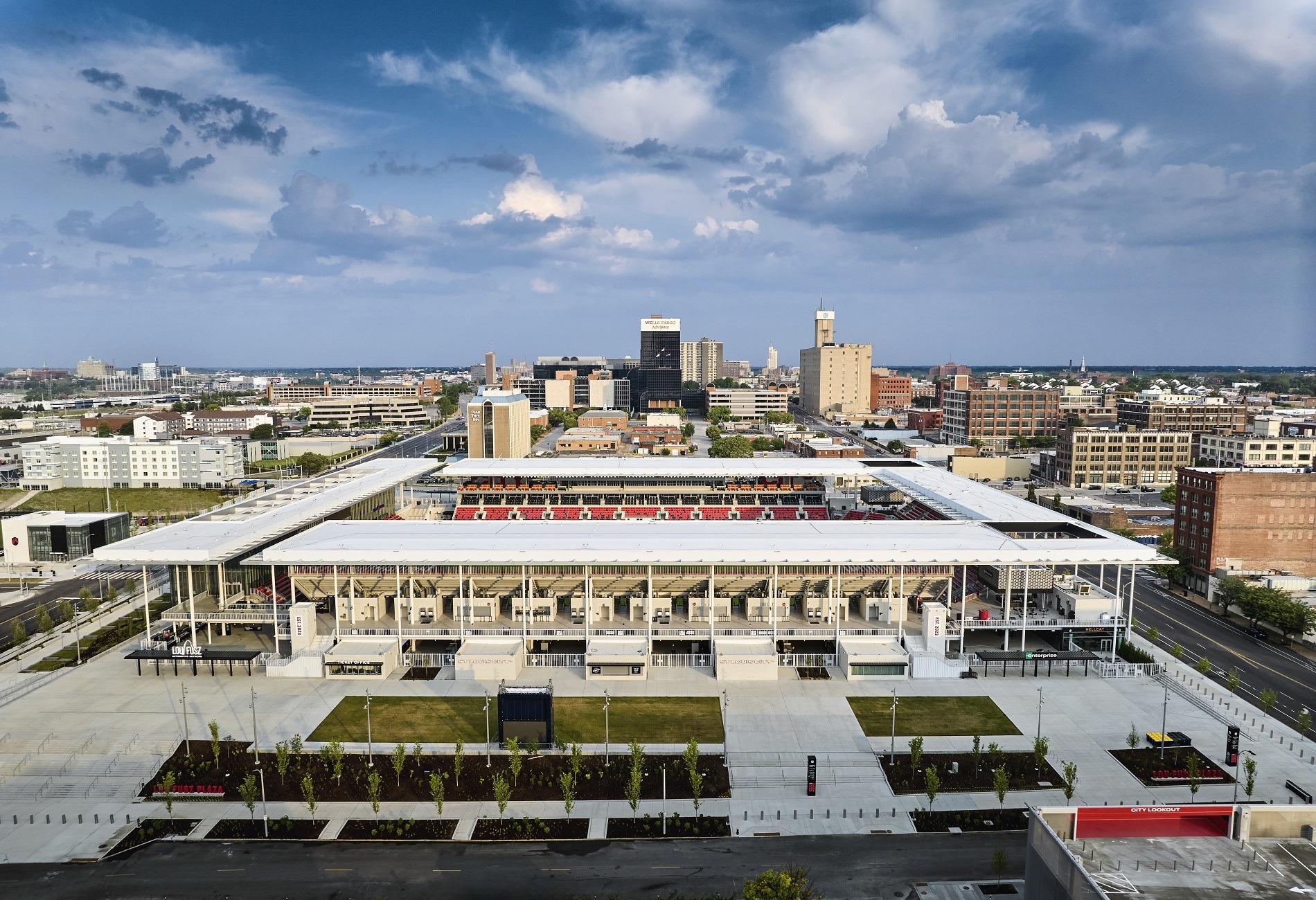
The vision for the 25.5-acre development, located in St. Louis’ Downtown West District, was driven by team ownership. The majority women-owned team envisioned the stadium as a catalyst for broader district development to reenergize downtown and guide it into the future.
Since opening in 2022, the stadium development has become a hub of activity for downtown St. Louis, drawing people and investment to the area year-round. In the stadium’s inaugural year, it generated more than $168 million in economic impact, with more than 18% coming from outside the region. It serves as a destination for civic, community and private events, breathing new life into the district. In the 2023 season, the stadium hosted more than 200 private events.
Since MLS announced its expansion into St. Louis in 2019, Downtown West has seen a surge in investment. Nearly $820 million has been infused into the district, and more than 300 new occupancy permits granted, signifying the stadium’s broader economic, cultural and developmental impact.
"Our intention all along was for City SC to be about more than soccer — it is an investment in the economic and social vitality of our city and region." — Andy Taylor , Head of St. Louis CITY SC Ownership Group
Creative Connectivity
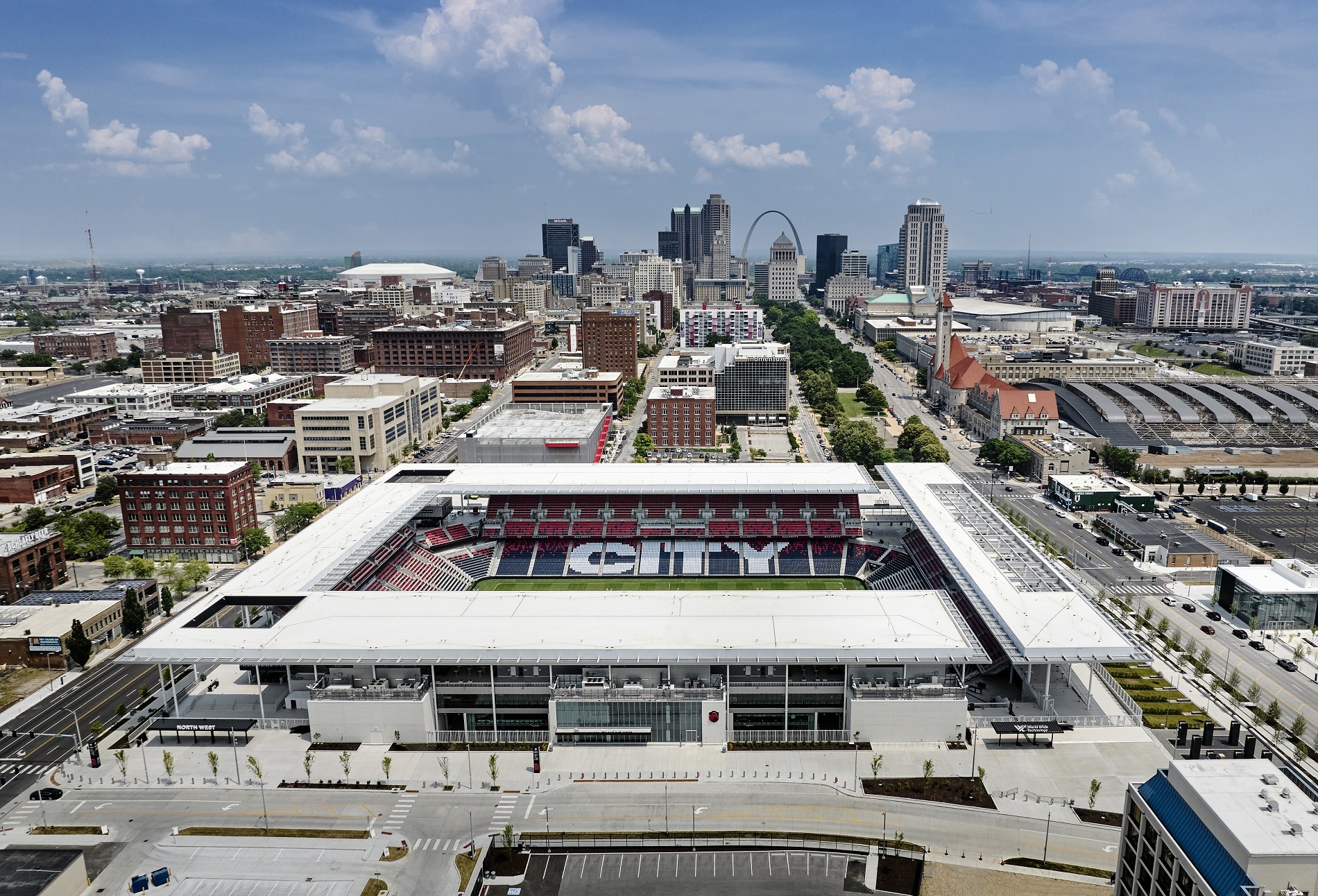
Transforming a Vacant Site
CITYPARK was built as an urban infill on a formerly vacant site that was once a freeway off-ramp and parking lot. The open-air stadium sits across the street from the iconic Union Station and at the end of the Gateway Mall, a strip of green and public spaces linking the venue to the iconic Gateway Arch and Mississippi River.
Integrating With the Surrounding Landscape
East-west sightlines throughout the stadium capture views of downtown and provide visual connectivity. Unlike most MLS venues, the stadium has two concourse levels to accommodate a 20-foot grade change across the site. The design uses the site topography to its advantage, with the pitch sitting 40 feet below street level. This reinforces the pedestrian-friendly scale of the building and complements existing development in downtown.
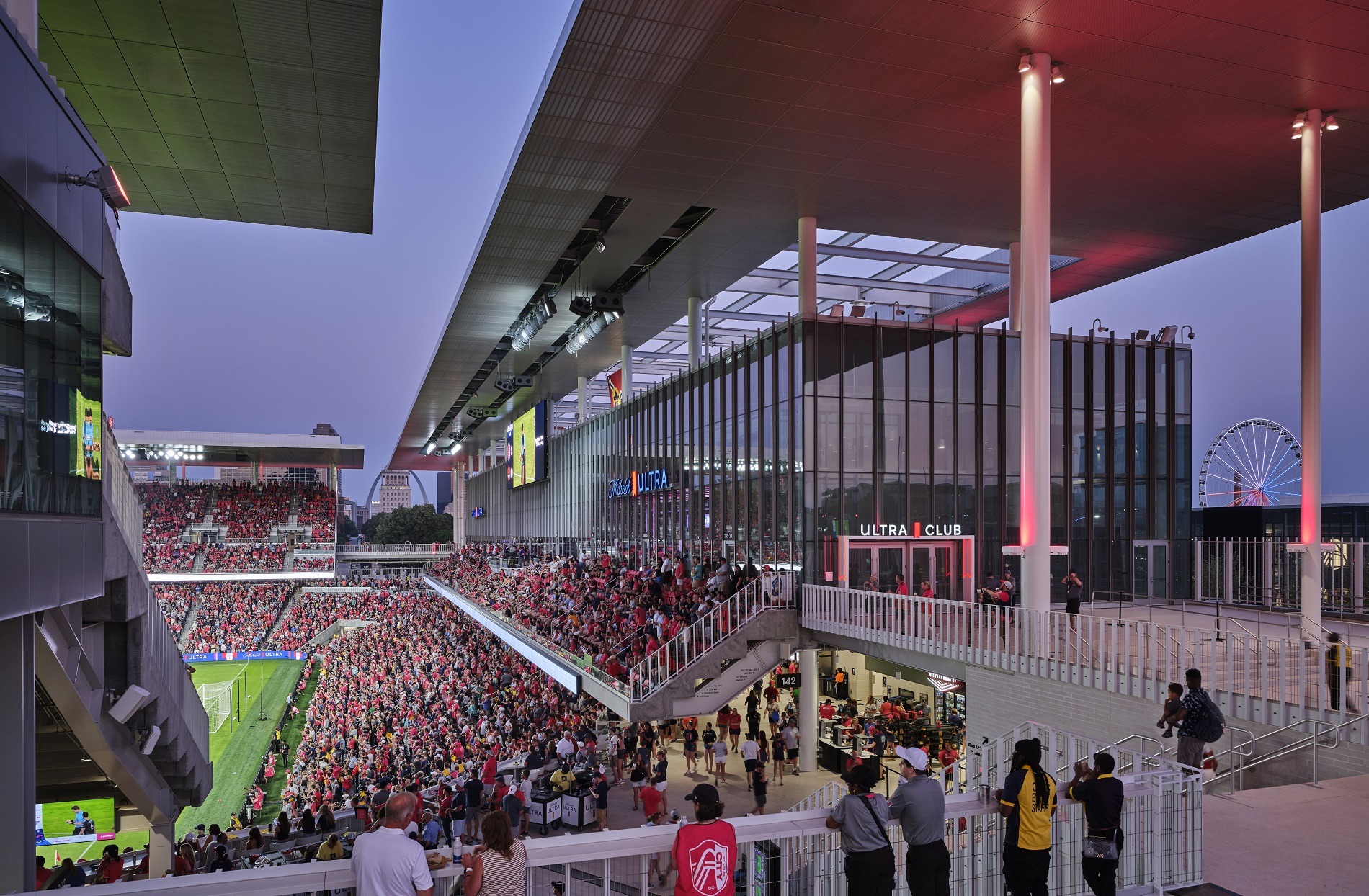
A Framework for Design
CITY SC’s ownership group worked with the design team to develop five strategic pillars. These pillars guided the project from its earliest conception through construction:
- Connection: The stadium and district should be artfully integrated and connected to the neighborhood’s fabric.
- Mobility: The design should move people efficiently using creative infrastructure and technology.
- Sport: The stadium should create a loud, proud home-field advantage
- Training: Ownership wanted to bring the team headquarters, practice fields and a development academy to the city. This facilitates a soccer-centric culture.
- Experience: The inspiring architecture and public spaces should bring 24/7/365 vitality to the neighborhood.
These strategic pillars provided a clear framework for the design team to create a stadium that would not only serve as a home for the team but also contribute to the revitalization of downtown St. Louis.
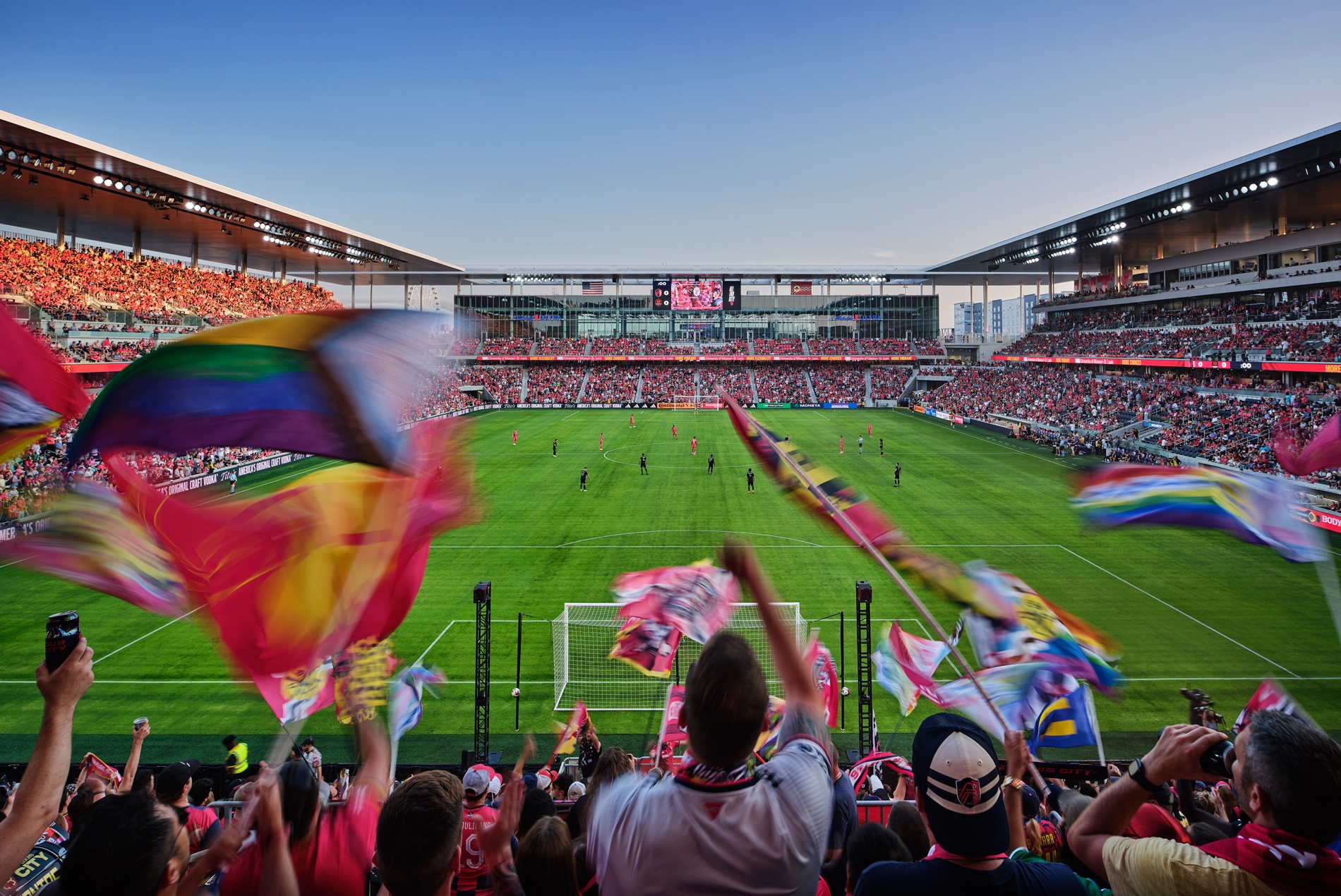
A New Standard for MLS Seating Bowls
The team designed the seating bowl to provide fans with an intimate experience at every price point, from the fanatical supporters’ club to diverse premium amenities. No seat is more than 120 feet from the pitch.
Home-Field Advantage
An overhanging upper seating bowl brings fans closer to the field, while a steep seating rake heightens the atmosphere. The supporters’ section features an even steeper rake, creating an intimidating wall of fans behind the goal that adds to the home-field advantage. These decisions, while common in other leagues, mark a significant shift away from the relaxed, single-bowl designs common across MLS.
Enhancing Views and Visual Connectivity
The southern part of the stadium that sits closest to the Gateway Mall is slightly detached from the venue’s northern structure. This design choice enhances views from premium seats while providing greater visual connectivity to the Gateway Arch.
The upper concourse also features a drink rail facing the city, encouraging fans to look out toward game-day festivities. Fans feel like they’re part of the larger cityscape.
"The home of the Major League Soccer team St. Louis City SC goes out of its way to be a good neighbor to the city around it." — Mark Byrnes , Writer, Bloomberg
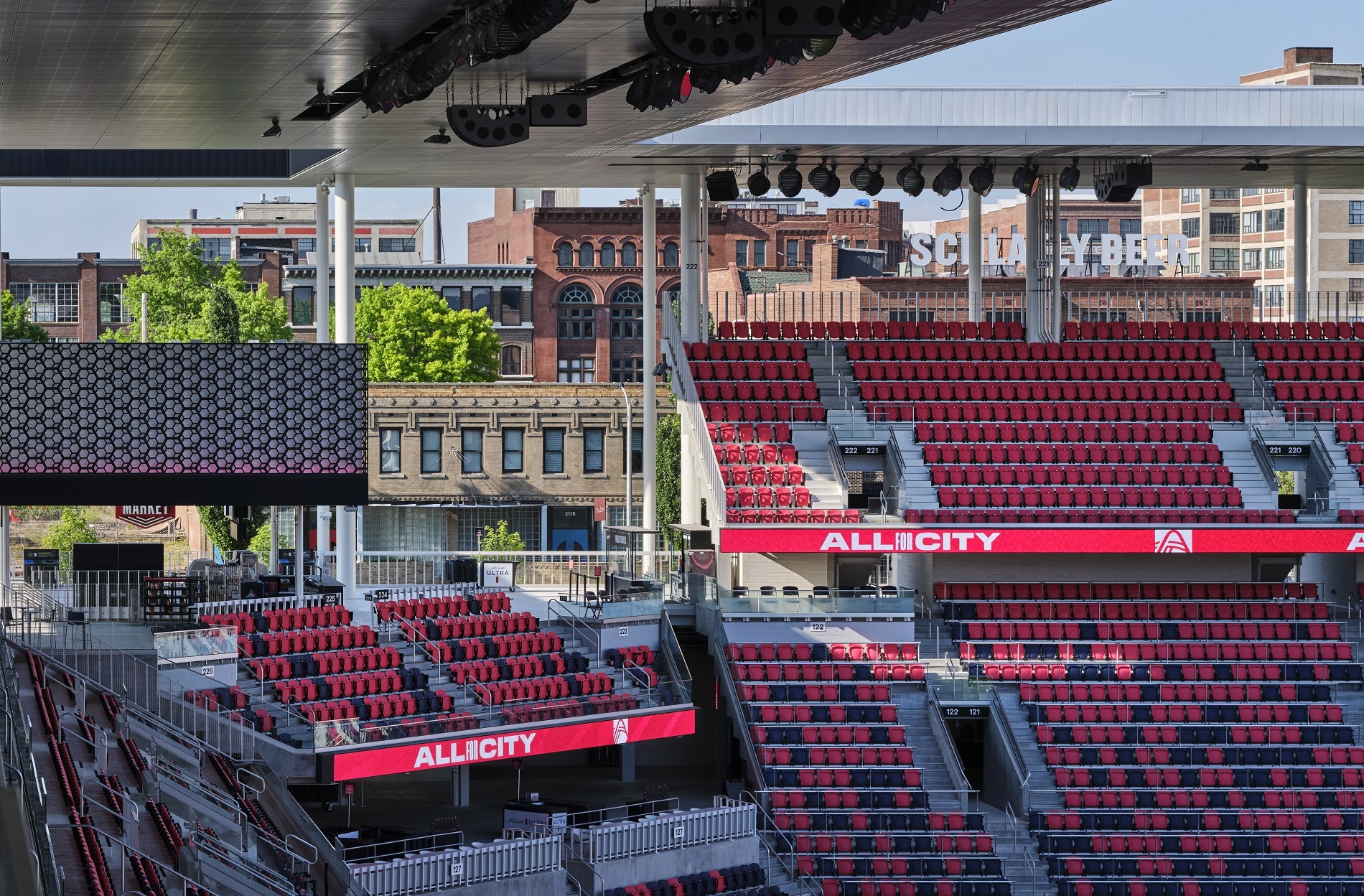
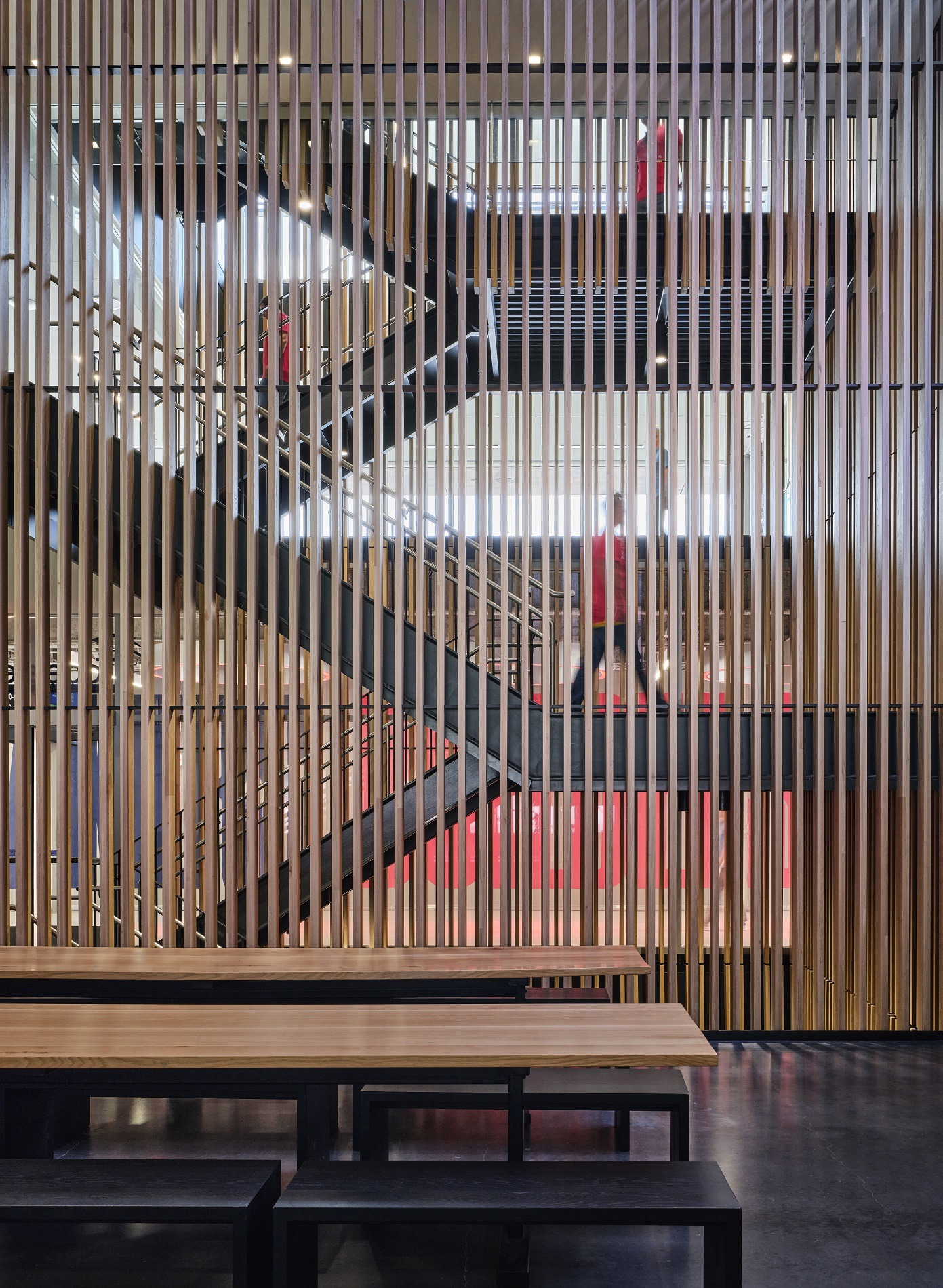
Permeable Design
HOK and Snow Kreilich Architects collaborated on the design to ensure the stadium would complement and celebrate St. Louis’ architectural character. The sleek, transparent design maximizes engagement with the city, allowing passersby to glimpse the action inside. A flat portico, open corners and slender columns frame the seating bowl, defining the stadium’s distinctive design.
A visually light and elegant 120-foot canopy mirrors the Gateway Arch’s reflective nature, sheltering fans from the weather, allowing daylight to seep in and amplifying fan noise.
This simple yet striking canopy creates a sense of enclosure that focuses attention on the field while keeping the stadium connected to the urban core, establishing a definitive sense of place.
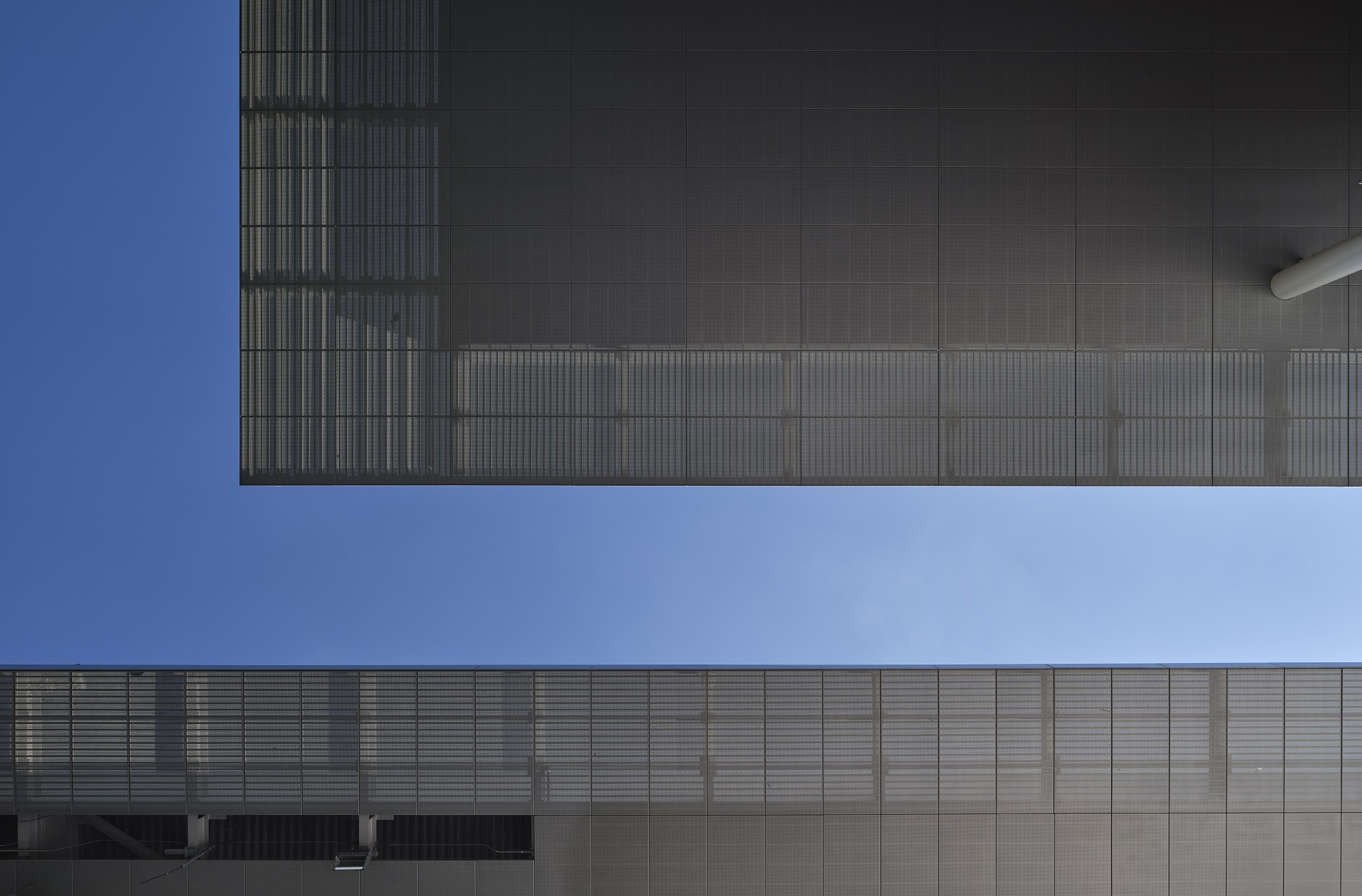
The permeable design minimizes the stadium’s height so that it relates to surrounding buildings. Inside, open concourses allow for easy movement and social interaction.
Ground-level retail and flexible public gathering spaces enhance the stadium’s engagement with the urban fabric. Community plazas transform the area before and after games. They also are used for outside events, ensuring that CITYPARK remains a vibrant part of the city even when there are no matches being played.
While most stadiums use one or two sides of their venue for operations, the team designed CITYPARK without a “back door.” Due to the stadium’s prominent downtown site, all four corners needed to be active and accessible. The design includes an underground tunnel to accommodate back-of-house services. The tunnel is accessible near the club’s training facility across Market Street. This innovative solution ensures that the stadium maintains its permeability and connection to the surrounding area on all sides.
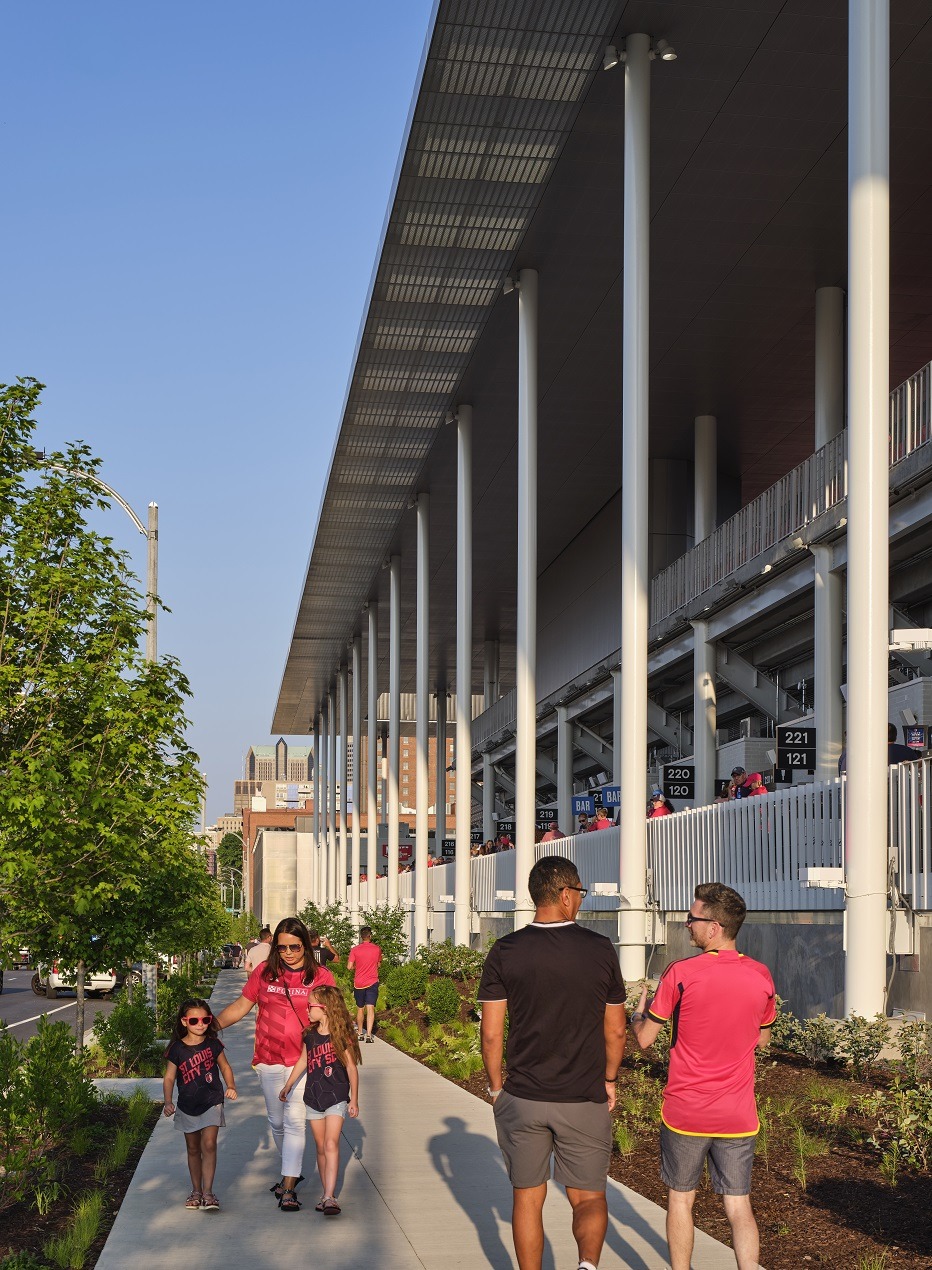
Elevating the Fan Experience
The owners were committed to creating a fan experience that was memorable, elevated and authentic to the city. Diverse seating products, unique gathering spaces, local food and beverage offerings and innovative technology engage fans in every part of their journey.
Staying Connected to the Action
Wide, open-air concourses help fans stay connected to the action on the field. Clear signage makes navigating the stadium an intuitive experience.
Diverse Seating Options
A variety of seating options, from general admission to club, drink rail, pitch boxes and suite spaces, give fans a multitude of experiences. The ULTRA Club sits on Market Street and serves a dual function, transforming into an indoor event space beyond game day with floor-to-ceiling windows offering expansive city views. The Moneta Pitch Club, Together Credit Union Club and open-air CITY View Terraces provide additional options.
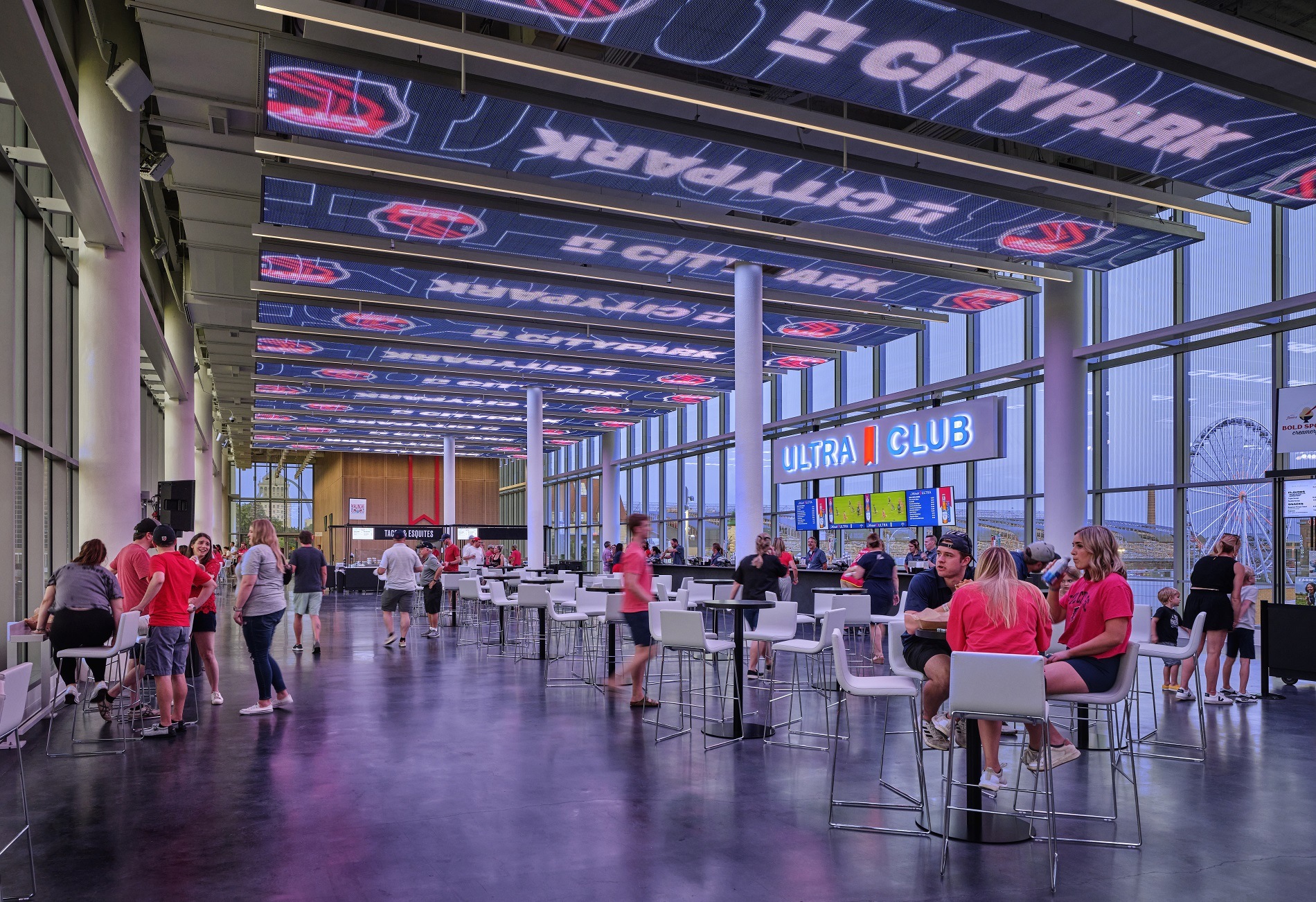
Local Food and Beverage
CITYPARK’s food and beverage options showcase the best of St. Louis cuisine. The stadium partnered with St. Louis-based and James Beard award-winning chef Gerard Craft to curate the menu. Craft and other culinary partners were involved in the design process, which helped optimize layouts and workflows to increase efficiency and enhance the fan experience.
The stadium features a two-sided concession format, which allows fans to access their favorite items quickly. Hand-picked concessionaires and vendors celebrate many of St. Louis’ beloved restaurants, giving fans a true taste of the city. For those looking to grab a beer and socialize before or during the game, the “Hellcat” brew pub offers a variety of local craft beers.
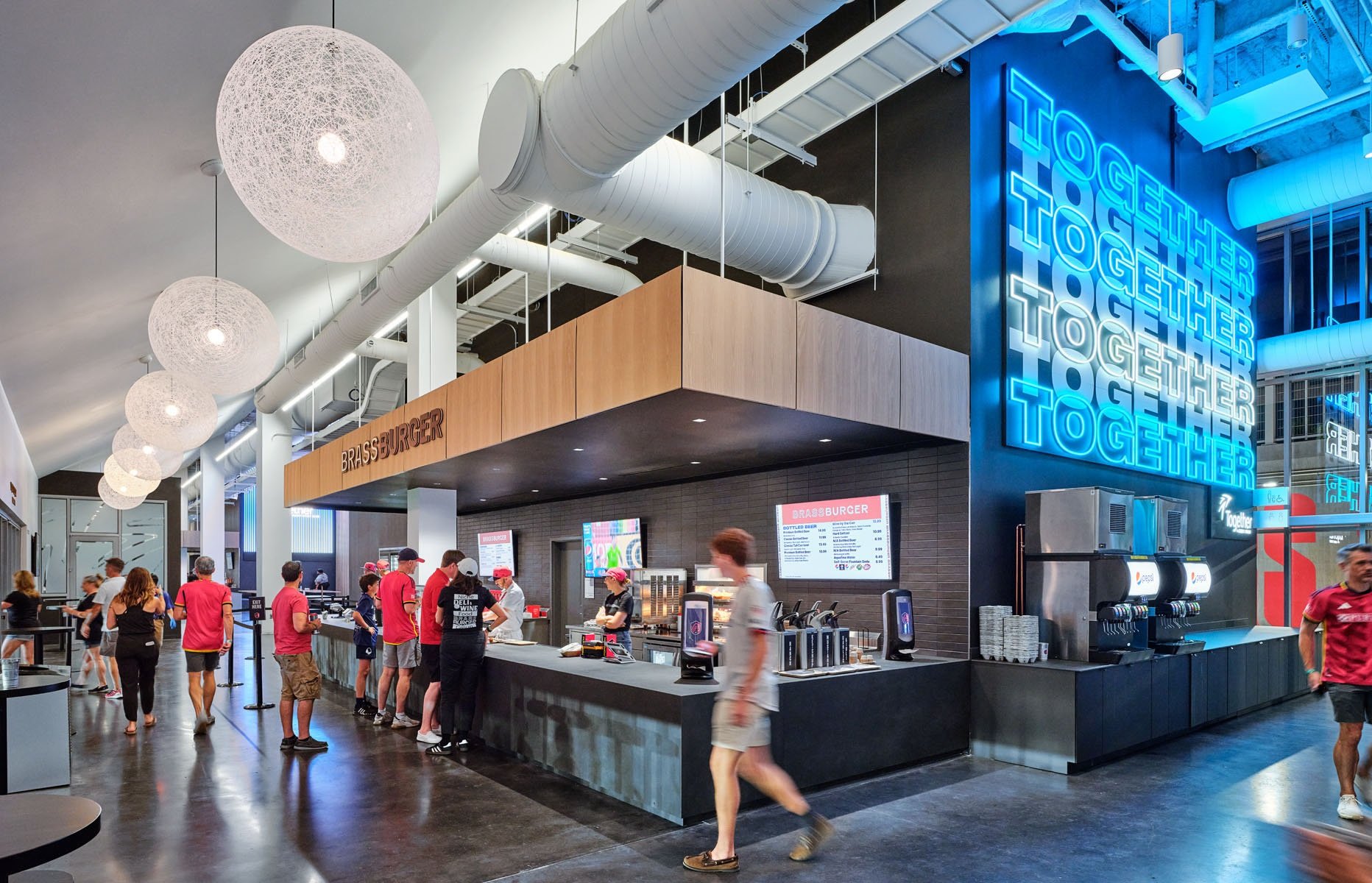
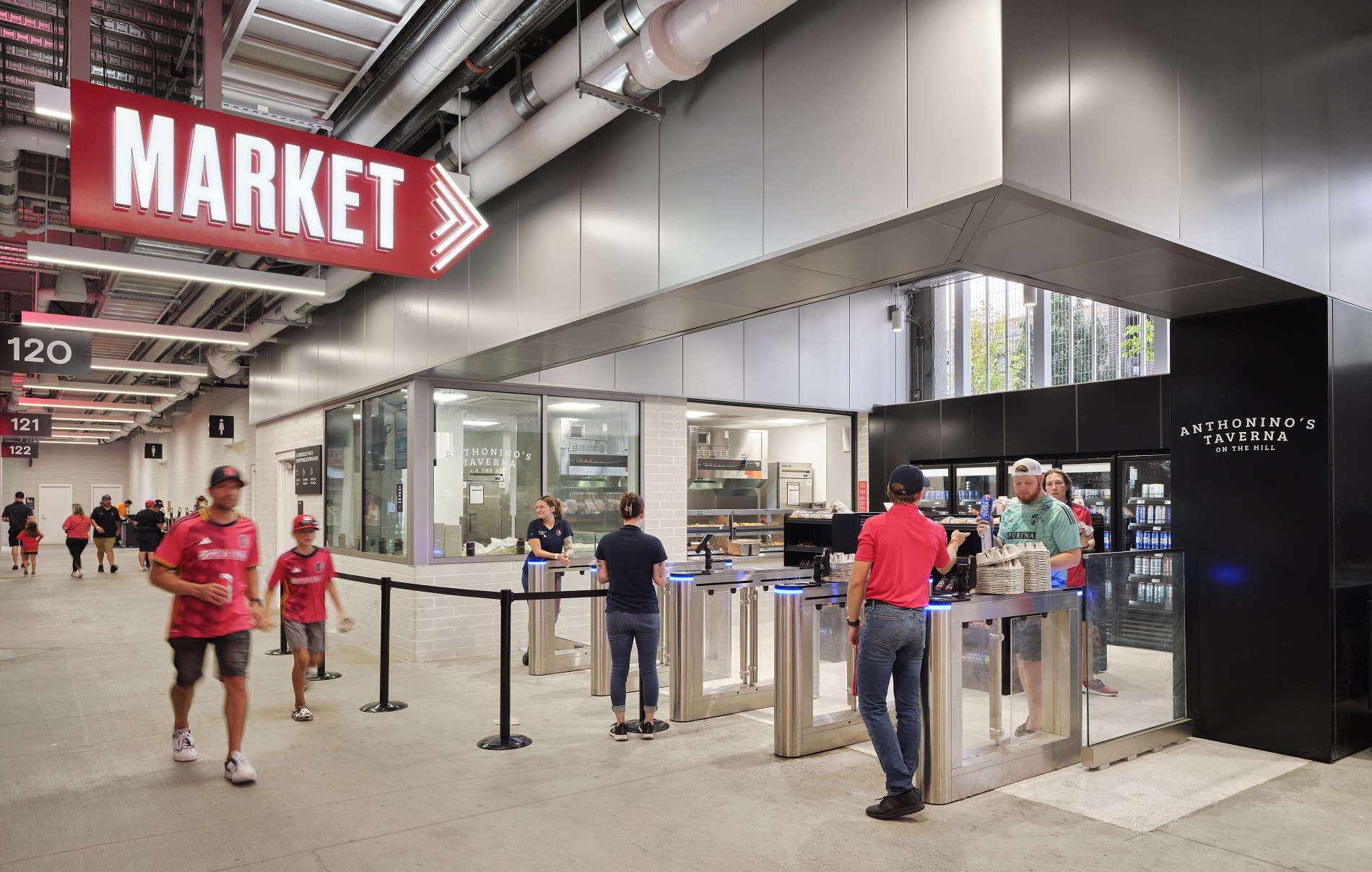
Innovative Technology
CITYPARK incorporates cutting-edge technology to enhance the fan experience. The stadium features high-impact, thoughtfully integrated video boards, but the technological innovations extend far beyond that.
The cashless stadium facilitates a frictionless journey for fans. Mobile ticketing, in-game updates via the CITY app and advanced wayfinding systems streamline entry and exit processes. Fans can also take advantage of three grab-and-go markets and self-checkout units to bypass traditional lines.
The CITY app offers mobile ordering, making CITYPARK one of the first to adopt this convenient feature.
Behind the scenes, a fiber network connects the stadium, headquarters, training facility, team store and practice field. This interconnected systems ensures smooth operations and lays the foundation for future technological advancements.
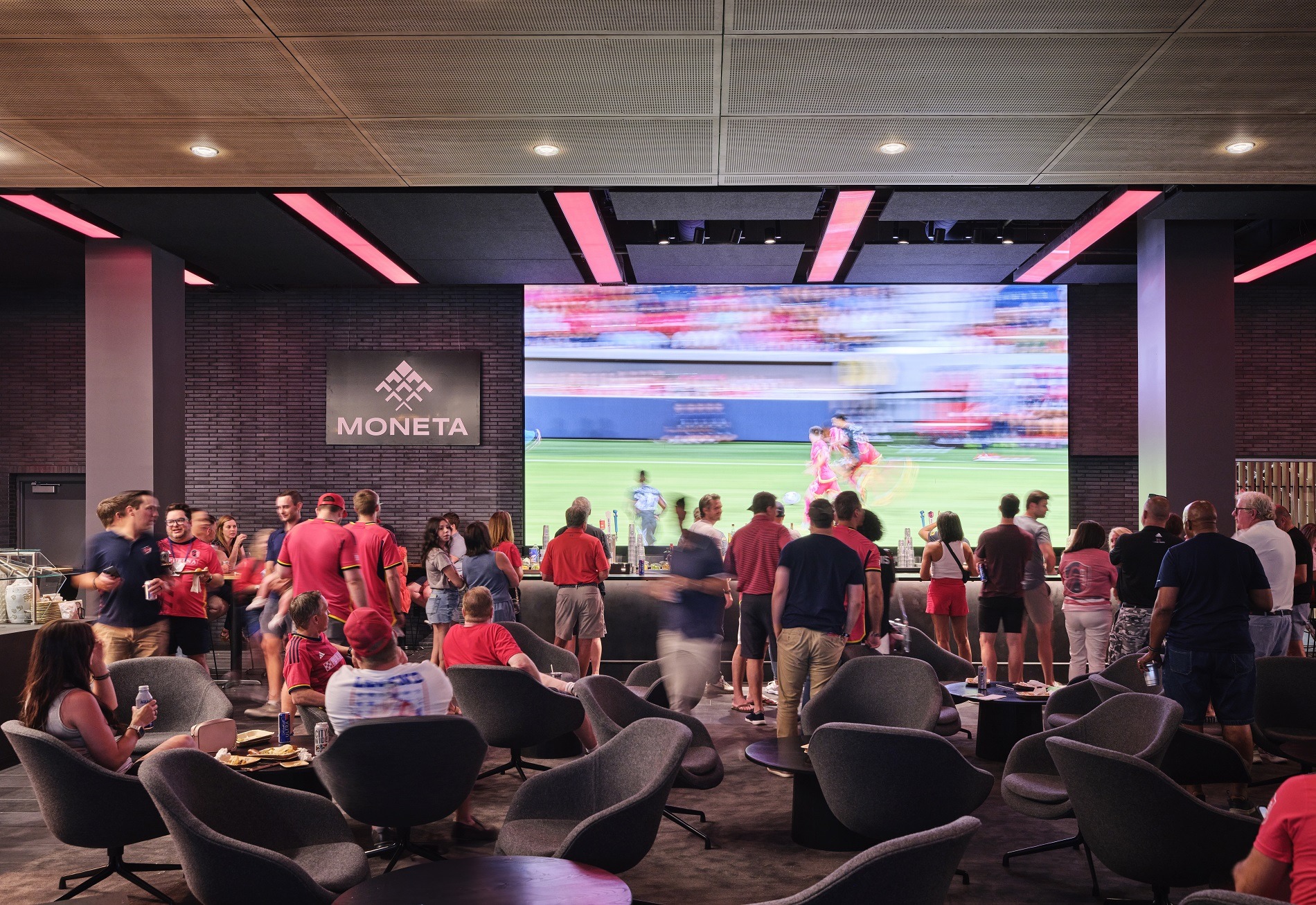
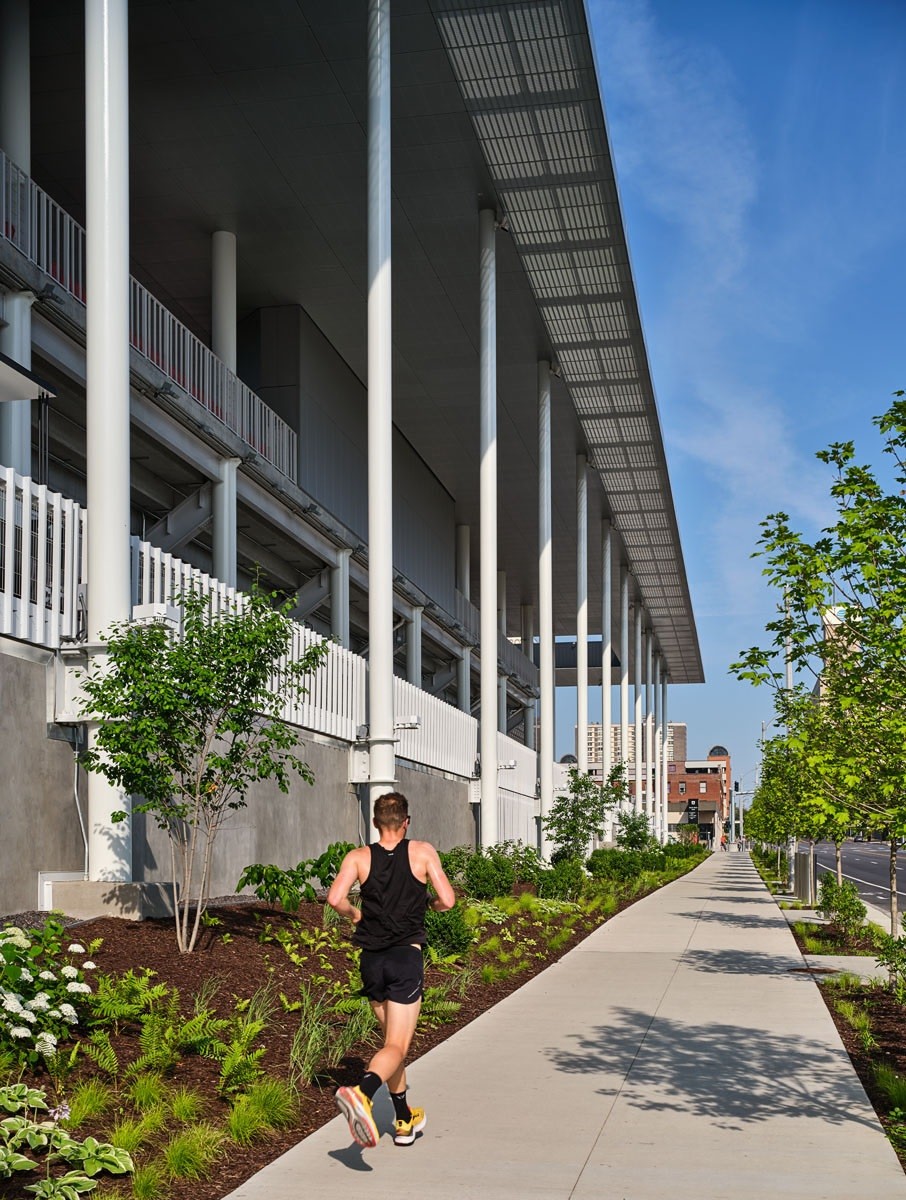
A More Connected and Equitable Future for St. Louis
The stadium’s location, within two blocks of a Metrolink Station and several bus lines, encourages public transit use. CITYPARK also connects to current and planned pedestrian and cycling pathways to promote wellness and make the venue easily reachable for all members of the community.
Designed as a zero-waste venue, the stadium incorporates sustainable features including 100% recycled structural steel, LED lighting, low-flow water fixtures and a highly efficient building control system. Native landscaping echoes the pre-urban ecosystem. An on-site rainwater management system directs rainwater from canopies to an underground cistern, promoting water conservation.
Honoring the Site’s History
The stadium’s site is the former Mill Creek Valley neighborhood. CITYPARK’s southwest plaza features a permanent art installation by East St. Louis native Damon Davis, honoring the site’s history. In the 1950s, approximately 20,000 predominantly Black residents were displaced, along with 5,000 homes, businesses, schools and churches.
Landscaping around the installation matches past plot lines with plaques displaying addresses of former buildings. The exhibition reflects the city’s past while building a more inclusive future, ensuring the stadium acknowledges and respects the area’s complex history.
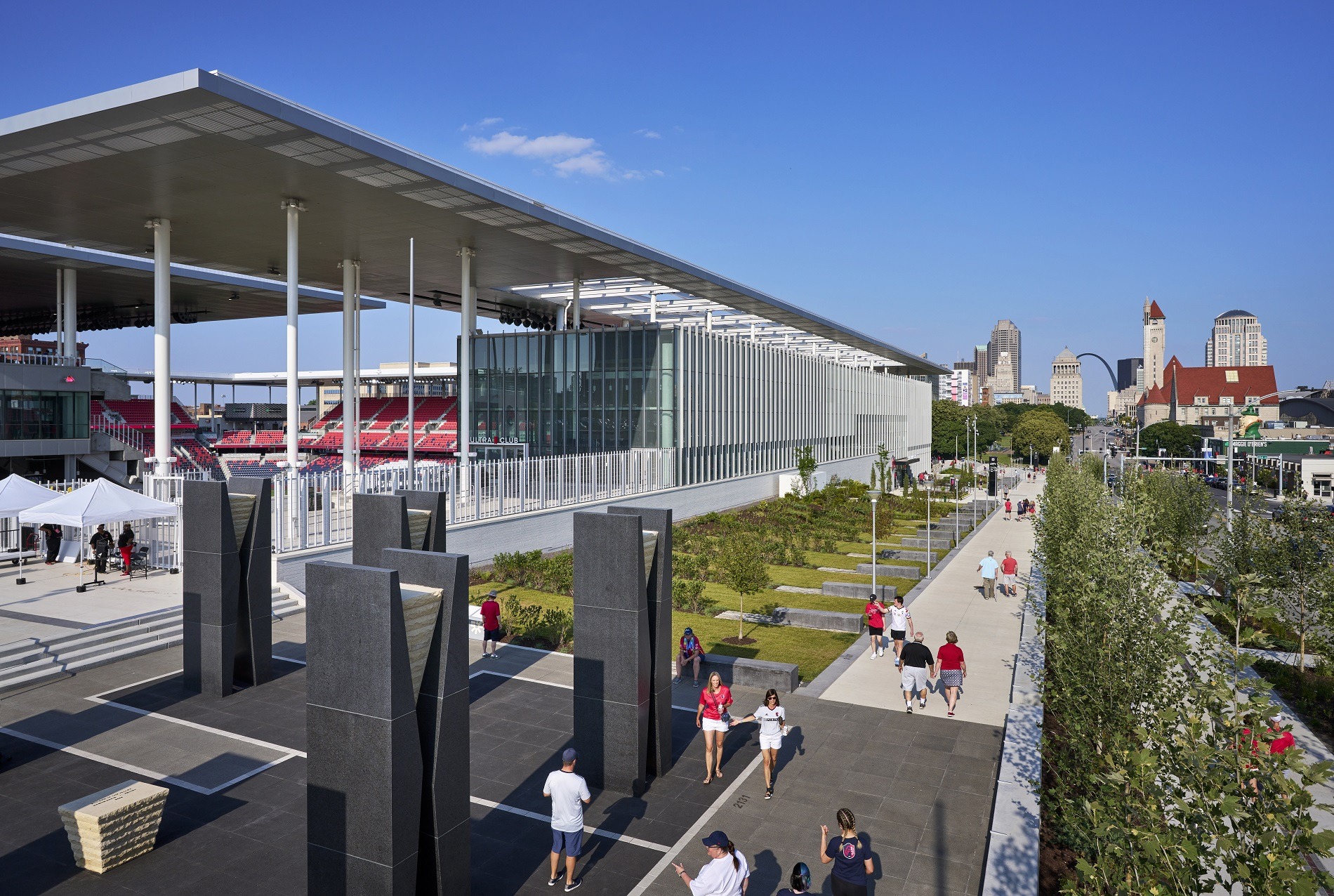
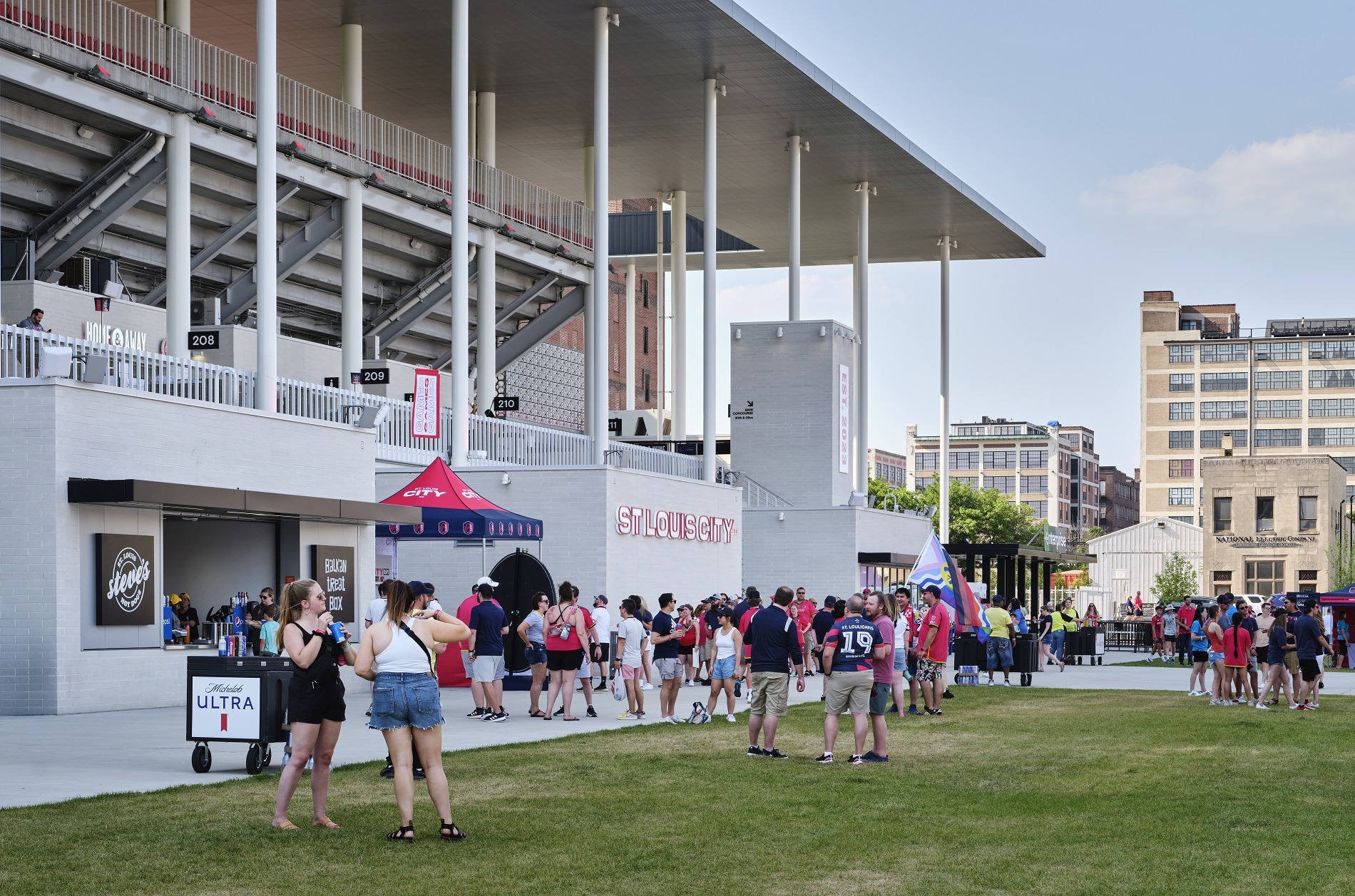
Project Team
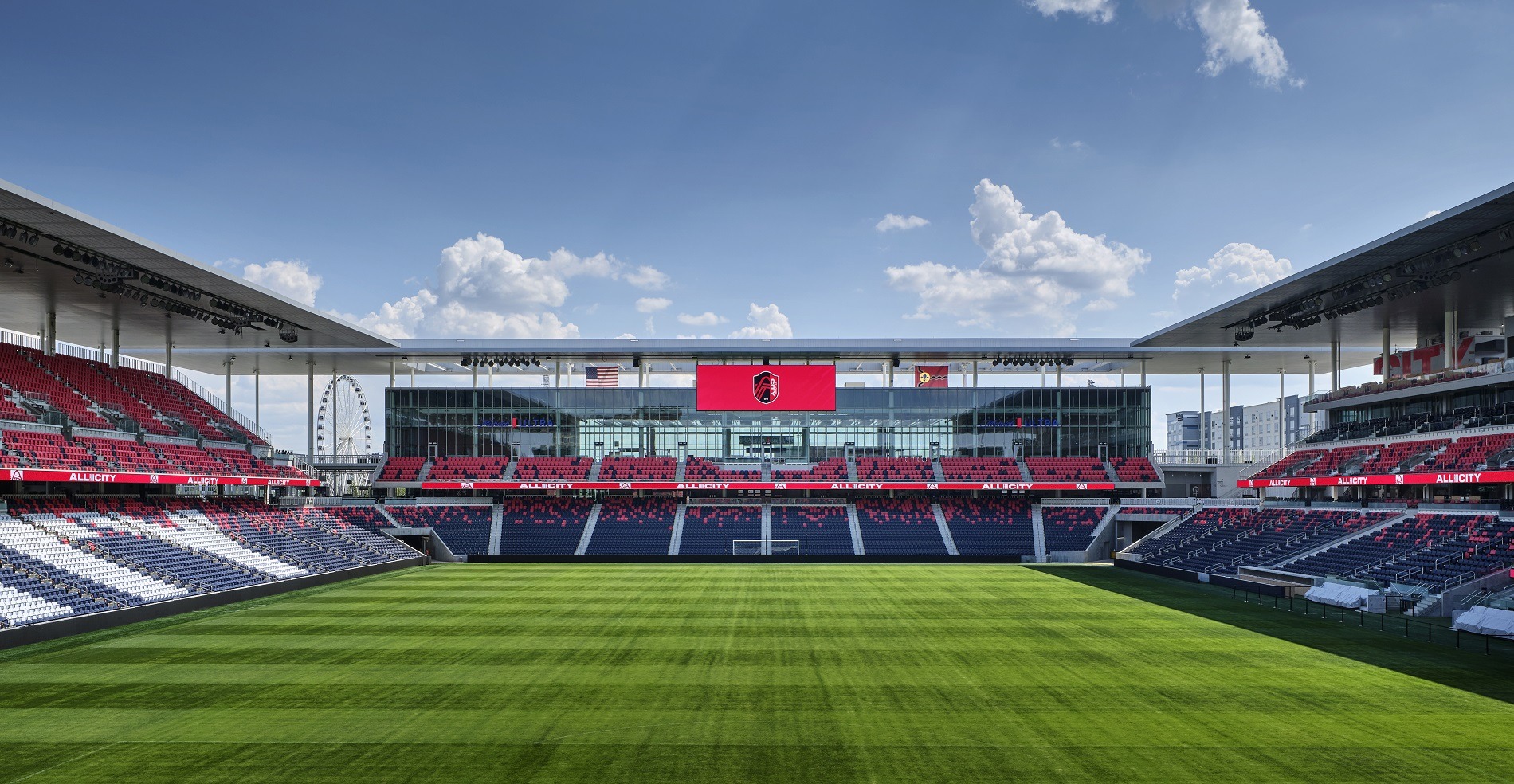
CITYPARK was a fast-moving project with a large, diverse team. HOK and Snow Kreilich Architects collaborated on the design. KAI Enterprises and WA, Inc. provided architectural design support. MAK Joint Venture (Mortenson Construction, Alberici Construction, Keeley Construction) served as the construction manager. The owner’s representative was Kwame Building Group + Unlimited Partners. HOK also served as the landscape architect, structural engineer and sustainability consultant. ME Engineers provided MEP engineering services. Kiku Obata & Company designed the stadium’s signage and wayfinding system.
